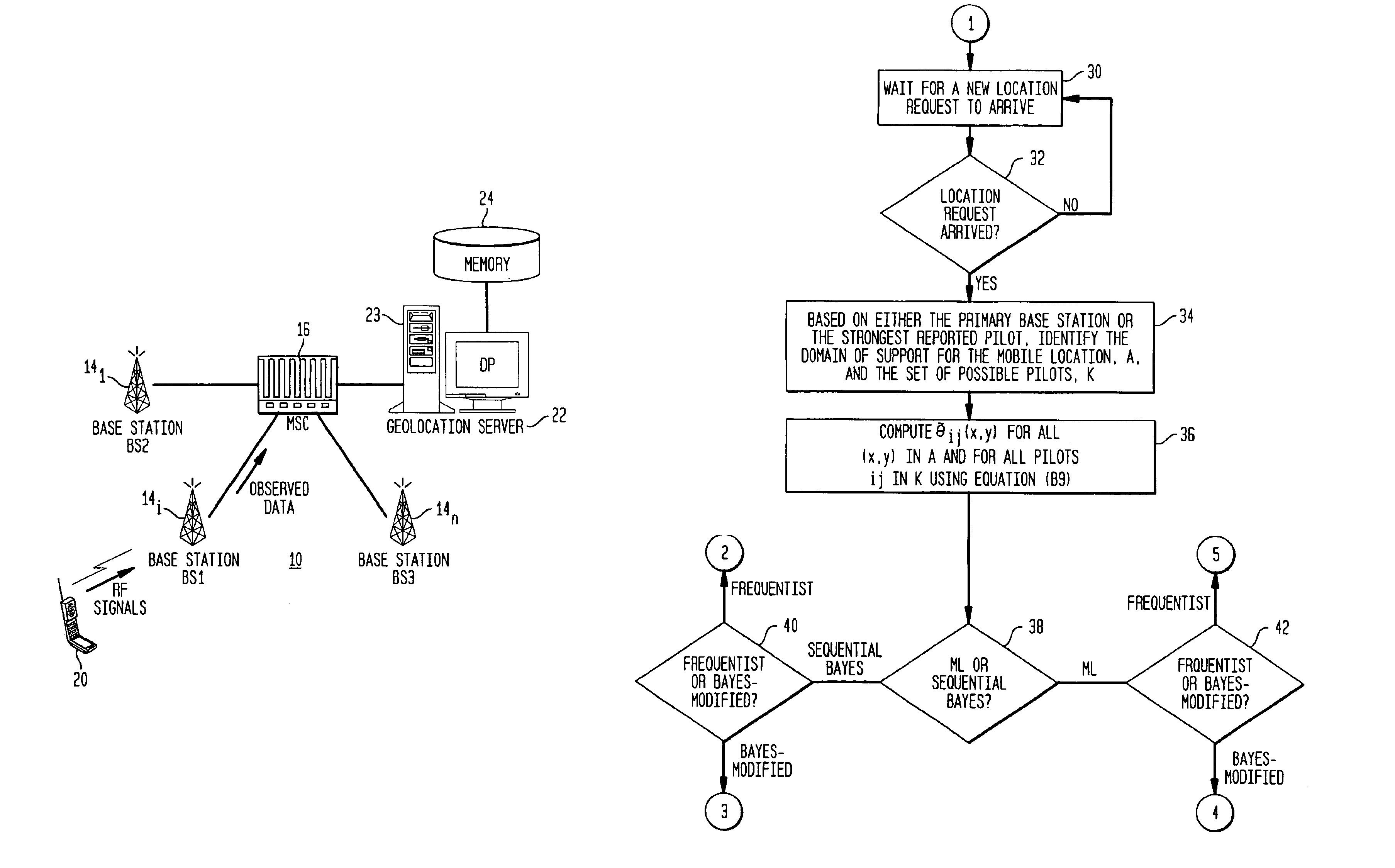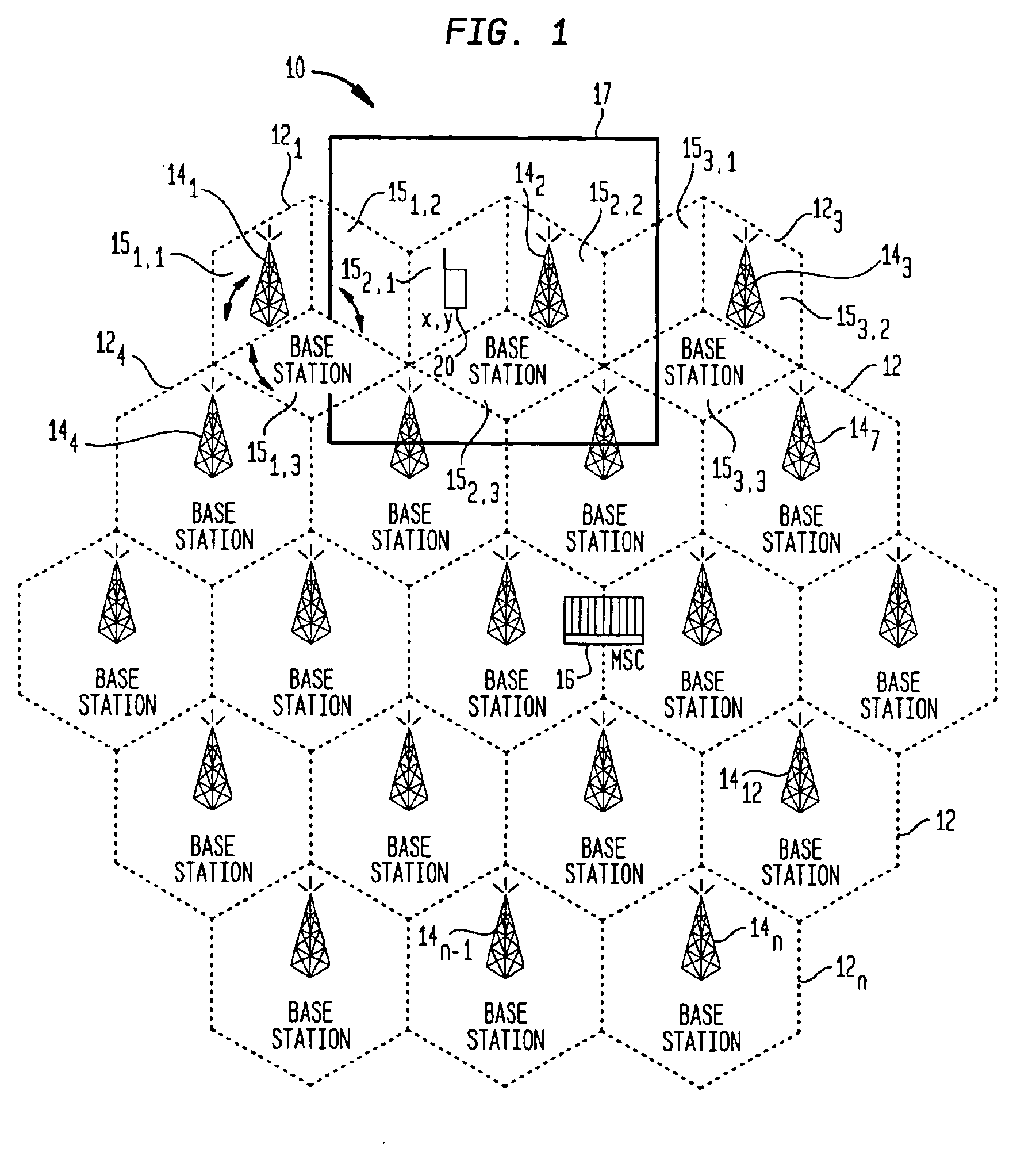Likelihood-based geolocation prediction algorithms for CDMA systems using pilot strength measurements
a technology of likelihood and geolocation prediction, applied in direction finders using radio waves, instruments, wireless communication, etc., can solve the problems of signal fading, inaccuracy of triangulation and angle of arrival techniques,
- Summary
- Abstract
- Description
- Claims
- Application Information
AI Technical Summary
Benefits of technology
Problems solved by technology
Method used
Image
Examples
Embodiment Construction
[0014]Referring now to the drawings and more particularly to FIG. 1, the reference numeral 10 denotes a service area for a CDMA cellular telephone system partitioned into a plurality of contiguous cells 121, . . . , 12n. FIG. 1 also depicts a plurality of base stations 141, . . . , 14n located within the service area 10. Also, the service area 10 includes at least one mobile switching center (MSC) 16. Typically each of the base stations 141, . . . , 14n has a sectorized antenna with a distinct pilot signal channel associated with each sector. Three sectored antennas are most common. Each sector of the antenna serves a corresponding sector of the associated cell. In FIG. 1, all of the base stations 141, . . . , 14n have three sectors each. The three sectors associated with base stations 141, for example, are denoted by the symbols 151,1, 151,2 and 151,3, respectively. A mobile unit 20 is shown in sector 152,1.
[0015]FIG. 2 is illustrative of the cells 121, . . . , 12n being further di...
PUM
 Login to View More
Login to View More Abstract
Description
Claims
Application Information
 Login to View More
Login to View More - R&D
- Intellectual Property
- Life Sciences
- Materials
- Tech Scout
- Unparalleled Data Quality
- Higher Quality Content
- 60% Fewer Hallucinations
Browse by: Latest US Patents, China's latest patents, Technical Efficacy Thesaurus, Application Domain, Technology Topic, Popular Technical Reports.
© 2025 PatSnap. All rights reserved.Legal|Privacy policy|Modern Slavery Act Transparency Statement|Sitemap|About US| Contact US: help@patsnap.com



